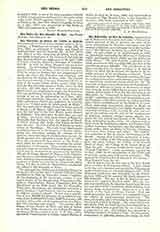

Sao Salvador de Bahia de Todos os Santos, Archdiocese of (SANCTI SALVATORIS OMNIUM SANCTORUM), a Brazilian see erected by Julius III, February 25, 1551, as suffragan of Lisbon, and raised to archiepiscopal rank by Innocent XI, November 16, 1676. The diocese at first comprised all Brazil, which had previously formed part of the Diocese of Funchal; the first Mass in Brazil was celebrated on April 26, 1500, at Coroa Vermelha Island by Henrique de Coimbra, O.F.M. In 1537 the Mercy Hospital was erected at Santos. The first bishop, Pedro Fernandes Sardinha, arrived at Bahia on June 22, 1552; he left on June 2, 1556, to return to Europe, but was shipwrecked between the rivers Sao Francisco and Cururipu, and murdered by the Indians, June 16, 1556. The Church was then governed by Francisco Fernandes till the arrival of the second bishop, Pedro Leitao (1559), who held the first Brazilian synod at Bahia, where he died in 1573. By 1581 there were sixty-two churches at Bahia and in the neighboring region, the Reconcavo. The first archbishop, Gaspar de Mendonca, took possession of his see by procuration on June 3, 1677. Archbishop Sebastiao Monteiro da Vida (1702-22) held a provincial council and published the statutes, known as “Constituicao do Arcebispado da Bahia”. The first governor of Brazil, Thorne de Souza, arrived at Bahia on March 29, 1549; with him were six Jesuits, the first sent to the New World, under Manoel da Nobrega. Two days later the first Mass was said at Bahia. On July 1, 1553, there arrived at Bahia the Venerable Jose Anchieta, S.J., The Apostle of Brazil. A native mission, Sao Andre, was begun forthwith near the city. In 1554 Father da Nobrega opened a college at Piratininga. The early Jesuit missionaries contributed greatly to the progress of the new colony, giving free education, curbing the violence of the pioneers, and protecting the Indians from slavery, for which purpose they obtained a royal decree in 1570. They also constructed, from Santos to Sao Paulo, a road which for three centuries remained the principal highway of the region. They compiled many important works on the native Indian languages, among which may be mentioned the grammars by Anchieta, Manoel da Veiga, Manoel de Moraes, Luiz Figueira, and Montoya; and Mammiani’s “Catechismo da doutrina christa na lingua brazilica da nacao kiriri”. The seminary at Bahia was founded by Damasus de Abreu Vieira, O.F.M.; in 1583 the Benedictines established the Abbey of Sao Sebastiao at Bahia.
The episcopal city, Bahia, was founded by Thorne de Souza in 1549 near the site of Victoria which had been established in 1536 by Francisco Pereira Coutinho. At the beginning of the nineteenth century it contained houses of the Benedictines, Franciscans, Carmelites, Augustinians, Italian Capuchins, and the Mendicants of the Holy Land; also the Carmelite, Trinitarian, Franciscan, and Dominican tertiaries, a mercy hospital, a leper hospital, and two orphanages, in addition to many schools. It has now a population of over 200,000 inhabitants; the archdiocese contains about 2,500,000 Catholics, 5000 Protestants, 208 parishes, 240 secular and 80 regular priests, 3 colleges, and 725 churches and chapels. The present archbishop, Jerome Thome da Silva, was born at Sobral on June 12, 1849; educated at the Collegio Pio-latino-americano, Rome; ordained there on December 21, 1872; appointed Vicar-General of Olinda; named Bishop of Belem do Para, on June 26, 1890; and transferred as successor of Msgr. Macedo Costa to Sao Salvador on September 12, 1893, being enthroned in February, 1894.
A. A. MACERLEAN

